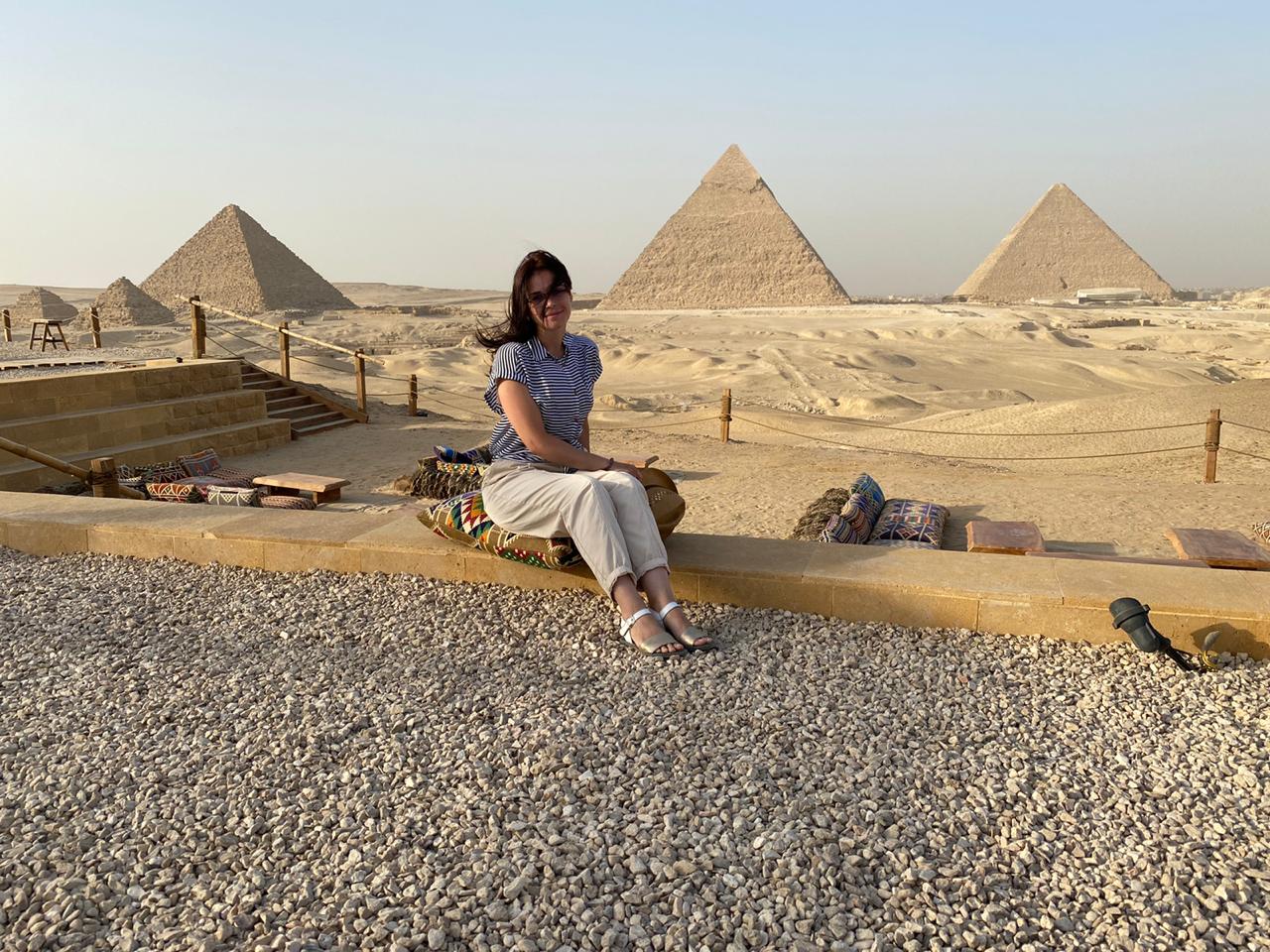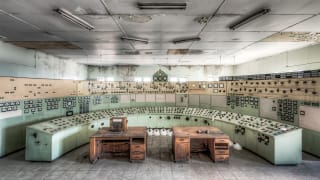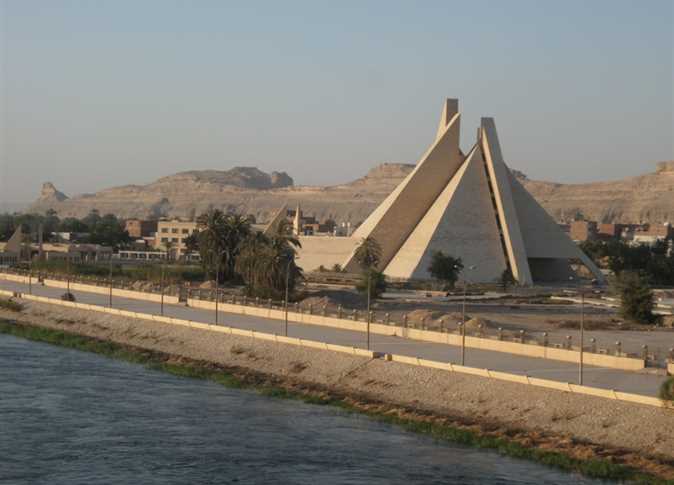The nineteenth-century British photographer Francis Frith made his reputation in the 1850s with his iconic photographs of Egypt and the Holy Land. Describing his work, Frith wrote, “A truthful record is of more value than the most elaborately beautiful picture.”
Whereas people question the subjectivity of historical texts, documentary photography is often “consumed en-masse, seen as impartial,” said Heba Farid, coordinator of the Photographic Memory of Egypt (PME) program at the Center for Documentation of Cultural and Natural Heritage (CULTNAT), an archive of Egypt’s photographic history, which aims to present photographs in a physical, digestible form to the public, and guide them through the contents.
The agency of the photographer–how he or she constructs the subject and for what purpose–is generally overlooked by viewers. Frith, for instance, originally owned a grocery shop, which he sold in 1850 and set up a printing house to capitalize on rising interest in photography. Within a decade, he had travelled across the Orient shooting monuments and the architecture of old cities. His photographs, which became a document of these countries, were, nevertheless, made for commercial use, copyrighted and disseminated through postcards and illustrated books.
Issues pertaining to photography such as rights and policies of image handling, contextualisation, accessibility and collaboration in knowledge production are a primary focus for PME, which has over the years developed a massive collection of physical and digital photographs pertaining to 19th and 20th century Egypt. Public access to the collection, however, has been made available upon request since a browsable archive does not exist yet at CULTNAT.
In Reading History, an exhibition of photography and films about Egypt, which CULTNAT currently hosts in its cafeteria, PME borrows the model of an educational museum exhibit to engage a wider public with its collection. The exhibition, which focuses on the late 19th and early 20th centuries, seeks not to discredit photography as a historical document, but rather propose an alternative method to distill narratives–ethnographic, social, economic and cultural–from photographs by examining them as “artifacts, documents and cultural products of individuals.”
Through a selection of images from three private collections, Reading History showcases the work of a dozen professional, commercial and amateur photographers, contrasting familiar touristic photographs with studio and street images by local photographers. The poster board display at the end of the exhibition illuminates clues in the collections–photographer, place, year of printing, technique as well as details within the images–to offer its audience tools for contextualizing photographs they come across in their daily lives.
Images by Costa Zaphir and Photo Dakak–two Tanta based photography studios– cover the celebrations of the Moulid of al-Sayed al-Badawi between 1922 and 1936. Close examination of the collection shows changes on the street such as the presence of new businesses. One poster board highlights two men dressing in costume–one dresses in a belly-dancer suit, while the other wears a floral head scarf.
Next to the original black-and-white photographs of the festival shown in a glass vitrine is a Kodak photo cover. It reads: “Kodak is the Trade Mark and exclusive property of the Kodak Company. The word Kodak can lawfully be used only in connection with products made or supplied by the Kodak Company,” hinting at the rise of intellectual property rights and how foreign businesses dominated certain sectors in early 20th century Egypt. Encouraged by soaring demand for film and print in Egypt at a time when the country was becoming a fashionable tourist destination for Europeans, Kodak opened its first African office in Cairo in 1912.
The anonymous travelers’ collections suggest a similar trend. Thomas Cook had an exclusive concession on Nile steamers since 1880. The company’s steamer ships appear in the background of travelers’ photographs.
Reading History also exhibits original images from the family archive of Na’ima al-Misriyya (www.naima-project.org), a performer who was active from the 1920s through the 1940s. Na’ima is shown with her daughters at home, in school and in professional photo shoots at studios. Those images–some shot especially for the press–give depth to Na’ima as a real person. The way Na’ima poses for the camera in costume and the ambiance of studio sheds light on the tastes and aesthetics of middle class Egypt during that period, explained Farid. Captions explore whether Na’ima's postures reflected artistic practices in portraiture, fashion and lifestyle in the 1920s.
Farid considers studio photography a rich resource for researching a vernacular social history. Between the 1920s and 1970s, the relationship, which that social stratum developed with studio photography, can be compared to “a love affair” as people frequented the same studios over the years and photographs were venerated as lasting documents of their subjects.
Na’ima’s daughter, Fardous, wrote her sister, Labiba, on the back of a photograph on display: “I send you my photograph as I am physically away–a clear depiction of myself. Do not feel distressed if I pass away one day. For as you know humans perish and only pictures last.”
Poster board interpretations of the photographic collections seek to “demystify” subjects by highlighting physical and contextual details, explained Farid. Simple captions show the massive amount of information that can be drawn from photographs and how images, one of the researcher's primary resources, reference one another. This idea is explored further through four documentary films about King Farouk, Na’ima al-Misriyya, the building of the Cairene suburb Heliopolis, and Lehnert and Landrock’s photographic collection on 20th century Egypt, projected at CULTNAT. The films use over 200 still and moving images, explains Farid.
Reading History includes a table display of a stereoscope and stereographic cards. First introduced in Egypt by Frith in 1856, the stereograph is a tool that creates an illusion of depth by simultaneously showing two images of the same object taken from different perspectives. The stereoscope invites the audience to engage original photographs instead of disembodied digital copies.
Reading History seeks to familiarize visitors with conditions of production and reception of photographs. Designed like a museum exhibition, it raises curiosity about, and builds appreciation for, the photographic medium, along with an understanding that photography may hide more than it reveals, particularly when documenting history.
Reading History runs until January 20, 2011 at the CULTNAT gallery/cafeteria, Smart Village, Km 28, Cairo-Alexandria Desert Road, Giza, Egypt.
The exhibition is open to the public Sundays through Thursdays from 9 AM to 4 PM.
Contact info: Tel: +202-3534-3222; Direct: +202-3534-3157; [email protected]




